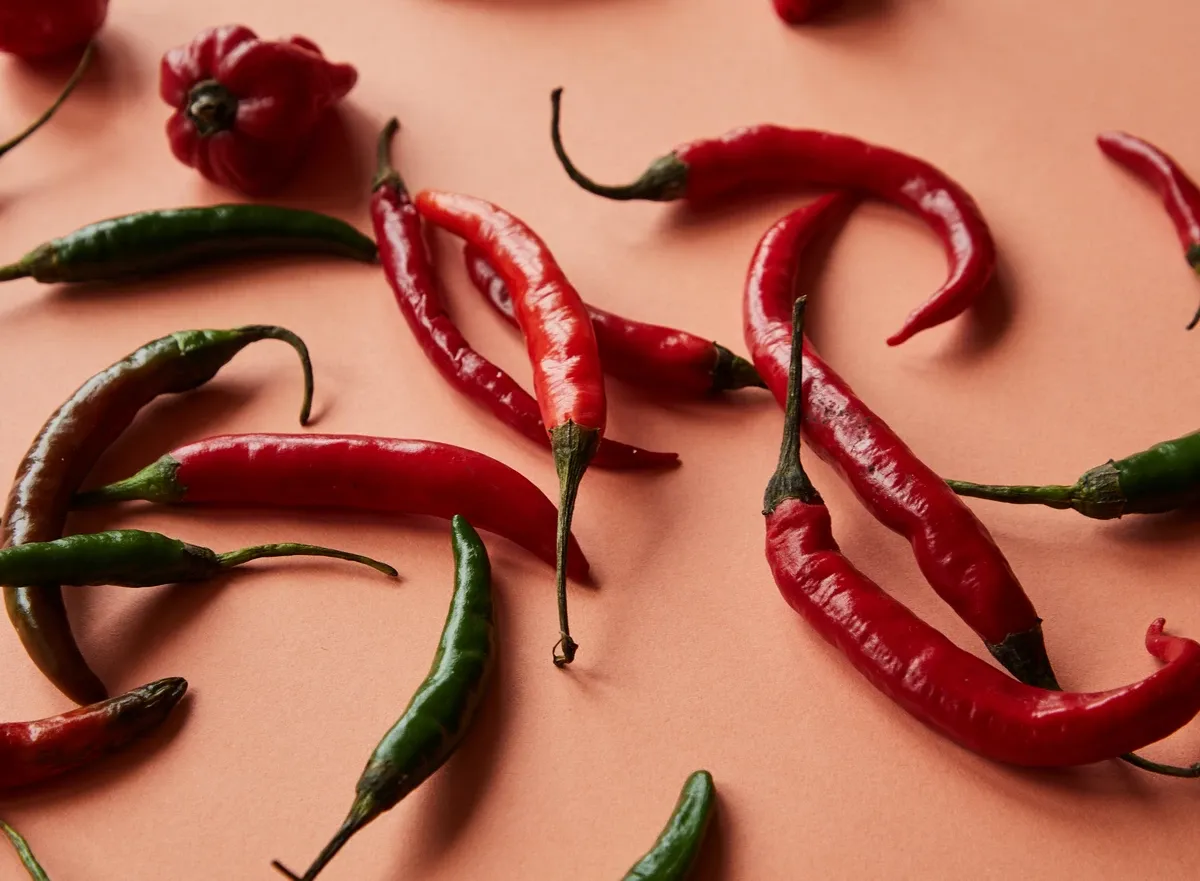Hey, salsa aficionados! 🌶️ Do you also agree that life is better with a side of salsa? If you’ve ever double-dipped into this magical sauce without a second thought, this article is for you!
We’re diving into 10 fun facts about salsa sauce that’ll make your next chips-and-salsa binge a historical, cultural, and gastronomical journey. Because let’s be real: salsa is more than just a condiment; it’s a way of life.
From its Aztec origins to its modern-day global popularity, we’re spicing up your know-how on this zesty treat. So grab some tortilla chips and let’s start dipping into these delicious fun facts! 🍅🎉
1. The Aztec Roots of Salsa: How it all started in Ancient Mexico
Long before guacamole got its groove, the Aztecs were busy being salsa pioneers. That’s right, we’re tipping our sombreros to these ancient folks today. They had the genius idea to smash together tomatoes, chilies, and other local ingredients.
Not just for kicks, either. This saucy blend served two purposes. It jazzed up their meals and helped preserve their meats. Talk about multitasking!
So, next time you’re scarfing down some tortilla chips with that red or green goodness, remember: you’ve got the Aztecs to thank for laying down the salsa fundamentals.
2. The Evolution of Salsa: From Simple to Sizzling
Think your salsa is a big deal now? Well, it’s had a long journey. Originally, salsa was a basic affair. A few veggies here, a couple of chilies there, and voilà.
Then came the Europeans. They didn’t just bring guns and germs; they brought onions and garlic. These ingredients got thrown into the salsa mix and took it from basic to sizzling hot, both literally and figuratively.
Nowadays, it’s more than a Mexican dish. It’s an international superstar. And you’ll find as many types of salsa as there are dance styles.
3. What’s in a Name? Salsa’s Many Monikers
Ever get flustered with the salsa jargon? Salsa Roja, Salsa Verde, Pico de Gallo—why can’t it just be simple? Well, the variety is what makes it exciting.
Let’s start with the basics. “Salsa” is a Spanish term. It simply means “sauce.” Easy enough, right?
But then the rabbit hole goes deeper. Depending on the ingredients, the name changes. Sometimes dramatically. It’s not just a culinary masterpiece; it’s a lexical playground.
So, the next time you dabble in different salsas, you’ll be as fluent in salsa names as you are in its flavors.

Image source: nopalitosf.com
4. The Marriage of Salsa and Tortilla Chips
Ever wondered how salsa and tortilla chips became an inseparable pair? Well, it all comes down to cultural evolution and economics. Salsa, originally a Mexican condiment, became commercialized in the United States in the early 20th century. And what better way to sell it than to pair it with something crunchy and addictive?
Interestingly, the U.S. salsa market outpaces ketchup: in 1991, salsa overtook ketchup in dollar sales in the United States. Since then, this dynamic duo has graced everything from Super Bowl parties to fine dining establishments. The numbers don’t lie; as of 2020, the salsa market in the U.S. was valued at over $14 billion.
This pairing isn’t just about taste—it’s a marvel of marketing and consumer habits. Companies found that by selling them together, they could capitalize on the “snacking” culture prevalent in many Western countries, especially the U.S. So, the next time you reach for a chip to dip, you’re not just enjoying a tasty snack; you’re participating in a market trend decades in the making!
5. Salsa Around the World: Not Just a Mexican Star
So you think salsa is only a Mexican sensation? Well, get ready for some globe-trotting. Salsa has burst out of its Mexican borders and samba’d its way into hearts worldwide.
From the tapas bars in Spain to sushi restaurants in Japan, this condiment has gone international. Different cultures have put their own spins on it, adding local ingredients and tweaking the recipes.
But whether it’s served alongside wasabi or hummus, the essence of salsa—its fresh, tangy punch—remains unchanged.
Learn some fun facts about sauces.
6. Spicing It Up: The Role of Chili Peppers in Salsa
What gives salsa its kick, its pizzazz, its “Hello, I’m here!” flair? Enter the chili pepper. From mild bell peppers to tear-inducing habaneros, chilies are the spice of life in the salsa world.
It’s not just about heat; chilies bring a depth of flavor. They introduce a layer of complexity that makes salsa more than just a tomato mush. Whether you like your salsa to induce sweating or just to tickle your tastebuds, there’s a chili out there for you.
And fun fact: capsaicin, the compound that makes chilies hot, is also good for your health. A spicy win-win!

Laker / Pexels
7. Let’s Get Fresh: The Importance of Fresh Ingredients in Salsa
What separates a jar of supermarket salsa from that heavenly concoction at your favorite Mexican restaurant? One word: freshness. Salsa thrives on fresh ingredients—tomatoes that still carry the warmth of the sun, cilantro that’s as green as a freshly mown lawn, and onions that make you cry (in the best way).
According to culinary experts, fresh ingredients are not just about taste; they’re about texture and nutritional value, too. Tomatoes are a rich source of antioxidants like lycopene, which are best preserved in fresh form.
So next time you dip that chip, consider going the extra mile and making a batch of salsa from scratch. Your tastebuds—and your body—will thank you.
8. The Annual Salsa Showdown: The National Salsa Month
Mark your calendars, salsa lovers! May is officially the National Salsa Month in the United States. Why? Because Americans consume over 1 billion pounds of salsa each year—yes, you read that right! A month dedicated to salsa couldn’t be more justified.
From local salsa-making contests to nationwide events celebrating this beloved Mexican condiment, May is jam-packed with all things salsa. Some cities even host salsa dancing events alongside salsa-tasting ones. Talk about getting your salsa fix in every way possible!
So, don your apron or your dancing shoes—or both—and join in the festivities.
9. Salsa vs. Ketchup: A Condiment Showdown
Ever wondered which condiment reigns supreme? Let’s talk numbers: In 1991, salsa sales in the U.S. surpassed ketchup. If that doesn’t give salsa bragging rights, what does?
But it’s not just about dollars and cents; it’s about versatility. While ketchup mainly partners with fries and burgers, salsa is a global player. From being a staple in Mexican cuisine to gracing Spanish tapas, this condiment’s got range. Plus, it comes in various flavors and heat levels, catering to a broader array of palates.
So, next time you’re in the condiment aisle, give that ketchup bottle a knowing glance and reach for the salsa. Your global culinary adventures await.
10. Salsa: The Dance and The Sauce
No, you’re not seeing double; salsa isn’t just for your tastebuds, it’s also for your feet! Many people associate salsa with the vibrant Latin dance style that’s just as spicy as the sauce itself.
Believe it or not, both the dance and the sauce share common threads of cultural diversity and a rich history of blending various influences. They’ve each evolved and been embraced worldwide, and hey, what’s better than enjoying some salsa while dancing the night away?
The term “salsa” in both dance and food represents a mix, a fusion, a joyful melange. So, the next time you’re swaying to salsa music, take a moment to appreciate that you’re partaking in another form of this versatile term!
FAQ
Who invented salsa sauce?
Ah, the origin story. If salsa were a superhero, this would be its “bitten by a radioactive spider” moment. The credit goes to the indigenous peoples of Mexico, who were mixin’ and fixin’ tomatoes, chilies, and other spices long before Columbus was a twinkle in his father’s eye. So, yes, it’s a tale as old as Aztec time!
What is the history of salsa sauce?
Hold onto your sombreros, because salsa has a timeline spicier than a habanero! Native to Mesoamerica, salsa was a pre-Columbian staple made with tomatoes, chili peppers, and salt. With Spanish colonization, it got a European makeover with ingredients like onions and cilantro. The sauce went mainstream when companies like Pace and Tostitos started bottling it in the 20th century. Now, you find it anywhere from Tokyo sushi bars to Berlin food trucks—truly a jet-setting condiment!
What is salsa eaten with?
Is this a trick question? Salsa goes with everything! Okay, maybe not ice cream, but from tortilla chips to tacos, grilled meats to eggs, it’s your go-to glam-up for any dish that needs a kick. Heck, some folks even put it on their pizza. Don’t judge; that’s called culinary freedom!
Is salsa more famous than ketchup?
Oh, the salsa vs. ketchup saga—the Beyoncé and Rihanna of condiments. While ketchup may have mass appeal and be the McDonald’s of sauces, salsa is like that indie artist that everyone secretly thinks is cooler. In the United States, they’ve been neck and neck in sales, but globally, ketchup still wears the crown. However, salsa is catching up, one chip dip at a time!
Why is salsa important to Mexican culture?
Salsa isn’t just a sauce; it’s a cultural icon, a culinary expression of Mexican vibrancy and diversity. With its different regional variations—salsa verde, salsa roja, pico de gallo, to name a few—it encapsulates the rich tapestry of Mexican history and its blend of indigenous and Spanish influences. In Mexico, salsa isn’t just on the table; it’s in the nation’s DNA.
What are the other names for salsa sauce?
Call it what you want—salsa picante, salsa fresca, or just “that awesome red stuff”—it answers to many names. The term “salsa” itself just means “sauce” in Spanish. But each type has its own moniker, depending on ingredients, consistency, and region.
What language is salsa sauce?
Salsa speaks the universal language of yum! But its roots are Mexican, and its name is Spanish. So, in the most technical sense, it habla español.
Why is salsa sauce unique?
Well, darling, salsa is like the Frida Kahlo of food—it has layers! The interplay of acidity from the tomatoes, heat from the chilies, and freshness from the herbs makes it a complex condiment that’s simultaneously simple. Plus, it’s versatile. You can dial up the heat, sweeten the deal, or go tangy. It’s a choose-your-own-adventure kind of sauce!
When did salsa sauce become famous?
Salsa started stealing the spotlight in the 20th century, especially in the United States, where it did the cha-cha onto supermarket shelves and into the American culinary canon. The 1980s and ’90s saw a real salsa boom, with people dipping and dripping to their heart’s content.
Why is salsa so red?
Ah, the sultry, fiery red! That’s all thanks to the ripe tomatoes that form its base. But let’s not forget, there are green salsas too, made with tomatillos. So, while salsa may often be red-hot, she’s also got a green, tangy alter-ego. Variety is the spice of life, and in this case, the spice of salsa!











